Impact Research: Hydrocode Simluations
In general, hydrocodes provide us with information that we cannot get from actual physical
tests in the HVIT lab. These are some of special problems that can be solved using hydrocodes
and how the results can be used to design better meteoroid and debris shields for spacecrafts.
We can perform testing at velocities too high to obtain experimentally. Meteoroids follow
interplanetary orbits around the Sun, attaining velocities of up to 42 km/s (for highly
elliptical orbits intersecting the Earth's). If you add the 30 km/s orbital velocity of
the Earth, meteoroids can attain a theoretical maximum impact velocity of about 72 km/s
with a spacecraft in Earth orbit.
Man-made orbital debris follow terrestrial orbits and can impact a spacecraft head on in low
Earth orbit at a velocity of 15 km/s. These impact velocities can not be achieved in a laboratory,
however they can be modeled using hydrocodes.
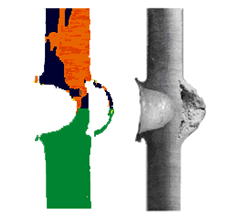
Hydrocode Simluations
2-D comparison of a hydrocode simulation to an actual experimental result (0.5" aluminum ball at 6.5 km/s).
2-D comparison of a hydrocode simulation to an actual experimental result (0.5" aluminum ball at 6.5 km/s).
In the lab, we launch spheres and cylinders, but actual debris is not so conveniently shaped.
Shape is important, and it is difficult to launch shapes other than spheres and cylinders.
Hydrocodes can provide information about pressures, temperatures, stresses, strains, entropy,
and other parameters, of any point in the model, at any instant (discreet timestep) during the
impact event.
Hydrocode modeling of hypervelocity impacts with known hazardous materials is safer than actual
testing. In fact, the HVIT is concerned with many safety issues when it comes to operating the
HVIT light gas guns. If testing can be done via hydrocode computer simulations, there is no
safety issue.
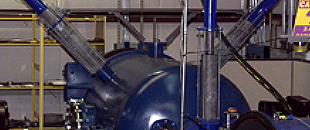 Diagnostic Tools
Diagnostic Tools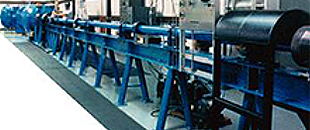 Light-Gas Guns
Light-Gas Guns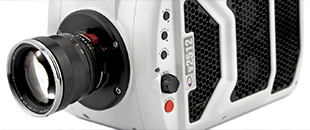 High Speed Cameras
High Speed Cameras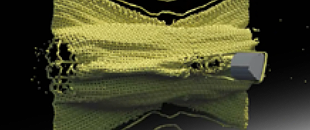 Hydrocode Simluations
Hydrocode Simluations